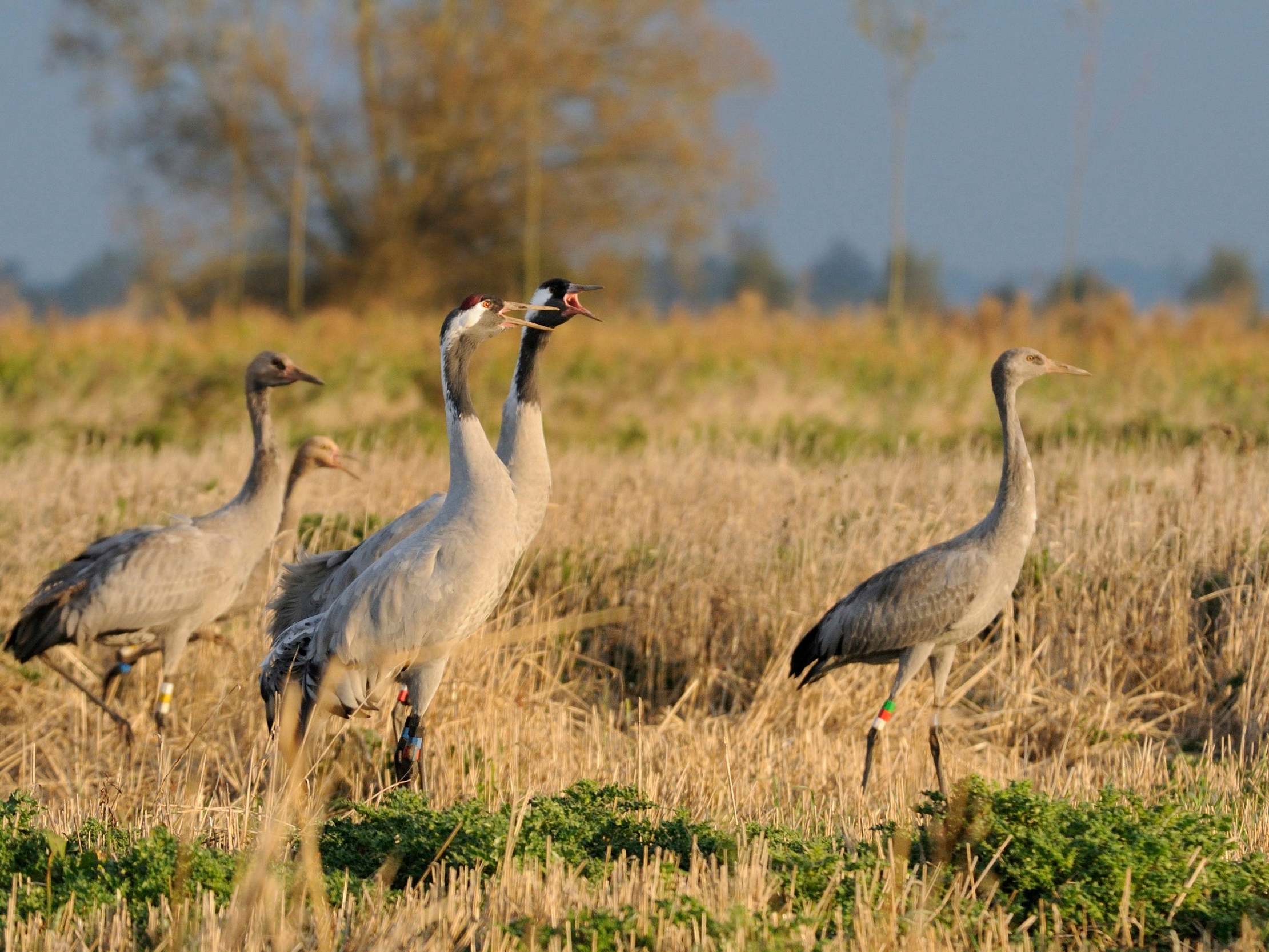UK crane population at highest level in more than 400 years after centuries of extinction
Conservationists estimate total population is now more than 200 birds

Your support helps us to tell the story
From reproductive rights to climate change to Big Tech, The Independent is on the ground when the story is developing. Whether it's investigating the financials of Elon Musk's pro-Trump PAC or producing our latest documentary, 'The A Word', which shines a light on the American women fighting for reproductive rights, we know how important it is to parse out the facts from the messaging.
At such a critical moment in US history, we need reporters on the ground. Your donation allows us to keep sending journalists to speak to both sides of the story.
The Independent is trusted by Americans across the entire political spectrum. And unlike many other quality news outlets, we choose not to lock Americans out of our reporting and analysis with paywalls. We believe quality journalism should be available to everyone, paid for by those who can afford it.
Your support makes all the difference.The UK’s population of cranes has reached its highest level for more than 400 years following a campaign to bring them back from extinction in the country, conservationists have said.
Common cranes went extinct in the UK centuries ago but have returned in recent years, with a few birds recolonising naturally alongside conservation work and a reintroduction programme which has boosted numbers.
The latest survey of common cranes found a record 56 breeding pairs in 2019, with 47 attempting to breed and successfully rearing 26 chicks, bringing the estimated population of more than 200 birds.
“The increase of cranes over the last few years shows just how resilient nature can be when given the chance,” said Damon Bridge, chairman of the UK Crane Working Group.
“With the support of our wonderful partners we've been able to recreate more and more of the cranes' natural habitat, giving them a place to recuperate after the winter and raise their chicks.”
He added: “They are not yet out of the woods, but their continued population climb year after year is a very positive sign.”
The common crane, which stand up to 130cm tall, would once have been a regular sight in the UK. They are thought to have bred in the UK during the Middle Ages and English place names with the prefix “Cran”, such as Cranfield in Bedfordshire, are derived from the species.
However, hunting and the loss of their wetland habitat drove the crane to extinction in Britain in the 1600s.
A small number of wild cranes returned to Norfolk in 1979 and work by conservation groups to improve wetlands has seen them spread to other areas of the country.
In 2010, the Great Crane Project - run by by the RSPB, Wildfowl and Wetlands Trust (WWT) and the Pensthorpe Conservation Trust - was started to further help the species.
The project, funded by Viridor Credits Environmental Company, works to create and improve existing habitat, as well as hand-rearing young birds for release on the Somerset Levels and Moors.
Cranes also recolonised Scotland in 2012 and Wales in 2016, while they turn up as occasional migrants in Northern Ireland but are not yet nesting there.
Nature reserves played a vital role in supporting the growing crane population, with at least 85 per cent of the breeding birds found on protected sites, according to RSPB conservation scientist Andrew Stanbury.
Dr Geoff Hilton, chief scientist at the WWT, thanked land managers and farmers for supporting crane conservation in Somerset.
“The success of the crane project to date demonstrates what can be achieved in a short space of time by giving nature a helping hand,” he added.
Additional reporting by PA
Join our commenting forum
Join thought-provoking conversations, follow other Independent readers and see their replies
Comments